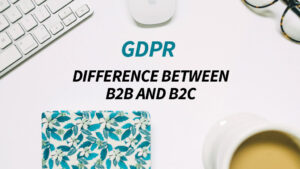If you look closely enough at your existing business, you’ll be able to see that there are already many stories which exist; from client or candidate success stories to how you’ve transformed your business. Following on from our previous blog article on The Science and Art of Storytelling, we’ve decided to have a closer look into the models for stories and the ways they can be utilised in your recruitment business.
If you look closely enough at your existing business, you’ll be able to see that there are already many stories which exist. These can be success stories of your top candidates/clients, or your own personal leadership success and how you’ve transformed your business. Perhaps your business was failing and is now thriving.
Whatever it is, your next story-led strategy is already there; according to research, it fits into one of seven basic plots.
- Overcoming the Monster: A hero journey of triumph against evil, despite adversity.
- Rags to Riches: A story of your success from start to finish. (Think Oliver Twist)
- The Quest: A quest that’s not necessarily linked to money & is instead a long journey.
- Voyage and Return: A journey that normally has some form of salvation before a return.
- Comedy: A humour-led approach.
- Tragedy: Think Macbeth – where the protagonist has a major fall from grace into villainy.
- Rebirth: The story of the hero being reborn into a better person.
Now, there’s no need to go into masses of detail because some of these may never apply to your business ethos or strategy. Instead, let’s look at an overall approach in which these story types can be useful before providing you some tips on how to utilise these. Remember, your story always needs to be focused on getting business, so tailor it to a human-led approach and not a numbers one.
Whether you plan to use this in your blogs, social media, infographics or any other form of marketing, before you start, you must be sure on what your story is. Following the success of Airbnb’s storyboarding campaign, it might be useful to outline your chosen story in this way. For instance, by outlining the story of your recruitment consultancy from start to finish, you can visualise the journey and focus on the positives and negatives, specifically how the hero of this overcame them. In this scenario, it might be useful to put your customer in the position of the hero and your recruitment business in the position of mentor.
If you’re struggling, try to answer these:
- Who are the villains, heroes and mentors and what are their motives? If the hero is a potential candidate, what hardships might they be up against? Have you been a successful mentor to candidates or employees?
- What type of journey is it that you’ve been on and where were you 5 or 10 years ago? What did you overcome and where are you at now? Perhaps your quest has only just begun, so where is it that you see your company?
- Has your company solved problems specific to an industry? Do you want your company to be reborn in its image or is there a new direction you want to be taking – if so, map this out like a storyboard.
The danger of failure and the tensions and potential for success are what drives a story. However, never stray from the truth as it’s not only misleading but is also going to quickly be dispelled and spiral into a failed campaign. Also, if your story doesn’t fit into on of the seven plots above, the chances are, it is not a good enough story for a campaign, or even a story at all. It might just be a nice anecdote.
In order for your potential customers to buy into your brand, it needs to be a convincing enough narrative. Whilst it might be nice to write a quick blog focused on telling your story, make sure this is threaded into your overall marketing strategy. Visuals are effective in marketing so consider making some video content and images which follow the same story you’re attempting to portray as the one you’re also going to be writing about.
One good example of storytelling in marketing comes from the shaving subscription company, Harry’s, who focused on weaving a narrative that was honest and relatable. They saw a gap to make a subscription-based model, made it affordable and then targeted the average male with an easily identifiable and relatable story. Although this is an extremely successful example of a story-led campaign being incredibly lucrative, it ultimately demonstrates the power that good, honest storytelling has.
Share :



